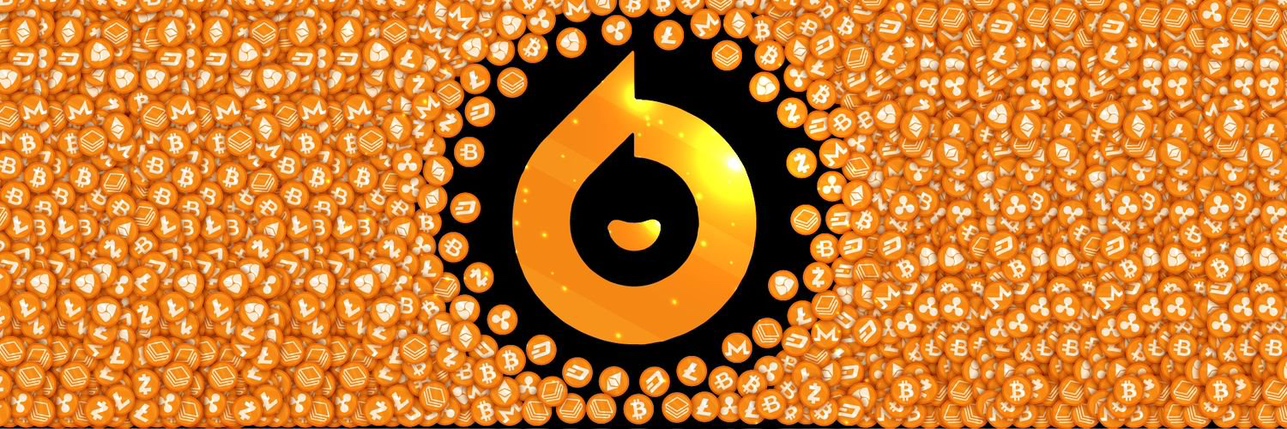
Giá TrueUSDTUSD
Chuyển đổi TUSD sang VND
Giá TrueUSD trực tiếp tính bằng VND hôm nay
Bạn nghĩ giá của TrueUSD hôm nay sẽ tăng hay giảm?
Thông tin thị trường TrueUSD
Về TrueUSD (TUSD)
Giới thiệu về TrueUSD
TrueUSD (TUSD) là stablecoin peg với USD đầu tiên được quản lý hoàn toàn bởi một tổ chức tài chính nhà nước và được xác minh minh bạch bởi các công ty độc lập. Stablecoin này được ra mắt vào tháng 03/2018 với tầm nhìn cung cấp một loại stablecoin minh bạch và an toàn. Với sự bùng nổ của thị trường tiền điện tử và sự bất ổn vốn có của nhiều loại tiền kỹ thuật số khác nhau, nhu cầu về một tài sản kỹ thuật số ổn định ngày càng tăng. TrueUSD ra đời để đáp ứng nhu cầu này.
TrustToken, công ty phát hành TrueUSD, được đăng ký là Doanh nghiệp Dịch vụ Tiền tệ thuộc Mạng lưới Chống Tội phạm Tài chính của Hoa Kỳ. Quỹ của họ được quản lý bởi Bộ Kinh doanh Công nghiệp Nevada, Phòng Định chế Tài chính. Hơn nữa, tài sản thế chấp cho TrueUSD được kiểm toán bởi Cohen Company cũng như Armanino, cả hai đều là những công ty kế toán toàn cầu hàng đầu trên thế giới.
Không giống với các loại tiền điện tử như Bitcoin và Ethereum, có giá trị có thể dao động đáng kể, TrueUSD được peg (neo) với giá trị của Đô la Mỹ (USD). Đối với mỗi TrueUSD đang lưu hành, sẽ có một lượng USD tương đương được giữ trong tài khoản ủy thác. Việc peg giá này đảm bảo giá trị ổn định và tạo dựng niềm tin của người dùng.
Là tổ chức hoàn toàn tuân thủ các quy định của Hoa Kỳ, TrueUSD tuân thủ tất cả những nguyên tắc pháp lý cần thiết. Việc kiểm toán thường xuyên của các công ty bên thứ ba đảm bảo tính toàn vẹn của TrueUSD, khiến nó trở thành lựa chọn hàng đầu cho những người dùng ưu tiên tính minh bạch và bảo mật.
Sự ổn định của TrueUSD đã thu hút nhiều người dùng khác nhau, bao gồm các nhà giao dịch, doanh nghiệp và tổ chức tài chính. Nó được sử dụng rộng rãi như một cặp giao dịch trên các sàn giao dịch tiền điện tử và như một phương thức thanh toán thay thế cho các ngân hàng truyền thống có thể chậm hoặc tính phí cao.
Nguồn thông tin về TrueUSD
Website chính thức: https://tusd.io/
TrueUSD hoạt động như thế nào?
TrueUSD sử dụng phương pháp token hoá để mang tiền tệ trong thế giới thực lên blockchain. Khi người dùng mua TrueUSD bằng USD, lượng USD tương đương sẽ được giữ trong ngân hàng đối tác ủy thác. Token TrueUSD sau đó được mint và gửi cho người dùng.
Quy đổi TrueUSD lấy USD là một quá trình đơn giản. Người dùng có thể gửi TrueUSD của họ tới smart contract và số USD tương đương sẽ được mở khóa từ tài khoản ủy thác và gửi đến tài khoản ngân hàng của người dùng. TrueUSD tương ứng sau đó sẽ được đốt để đảm bảo tỷ lệ 1:1.
Hoạt động của TUSD được điều chỉnh bởi các smart contract trên blockchain Ethereum. Các smart contract này xử lý việc phát hành và quy đổi token một cách an toàn. Toàn bộ quá trình đều minh bạch và có thể được kiểm tra bất cứ lúc nào, điều này làm gia tăng mức độ tin cậy của TUSD.
TUSD phục vụ nhiều chức năng khác nhau trong hệ sinh thái tài chính. Tính ổn định khiến nó trở thành một lựa chọn phù hợp để phòng ngừa rủi ro trước sự biến động của các tài sản khác. Hơn nữa, TUSD đóng một vai trò quan trọng trong các nền tảng Tài chính phi tập trung (DeFi), cung cấp phương tiện ổn định cho các dịch vụ tài chính khác nhau.
Mặc dù thành công nhưng TrueUSD vẫn tồn đọng những thách thức. Sự phụ thuộc của TUSD vào hoạt động ngân hàng truyền thống và việc tuân thủ quy định đôi khi có thể làm chậm quá trình xử lý. Các nhà phê bình cũng cho rằng mức độ tập trung hóa việc quản lý tài khoản ủy thác mâu thuẫn với bản chất phi tập trung của tiền điện tử.
Tổng kết về TrueUSD
TrueUSD đã tạo được chỗ đứng trong thế giới tiền điện tử đầy biến động bằng cách cung cấp một tài sản kỹ thuật số ổn định và minh bạch. Việc tuân thủ các quy định cùng với khả năng duy trì tỷ giá 1:1 với Đô la Mỹ giúp token này được chấp nhận và tin tưởng rộng rãi. Các smart contract, token và quy trình quy đổi cho thấy một cơ chế mạnh mẽ có thể tận dụng lợi ích của blockchain đồng thời giảm thiểu rủi ro của nó. Khi bối cảnh tài chính kỹ thuật số tiếp tục phát triển, vai trò của các stablecoin như TrueUSD sẽ còn trở nên quan trọng hơn, có khả năng định hình tương lai của cả nền kinh tế truyền thống và kỹ thuật số.
Lịch sử giá TrueUSD (VND)
 Giá thấp nhất
Giá thấp nhất Giá cao nhất
Giá cao nhất 
Giá cao nhất của TrueUSD là bao nhiêu?
Giá thấp nhất của TrueUSD là bao nhiêu?
Dự đoán giá TrueUSD
Khi nào là thời điểm thích hợp để mua TUSD? Tôi hiện nên mua hay bán TUSD?
Giá của TUSD vào năm 2026 sẽ là bao nhiêu?
Vào năm 2026, dựa trên dự báo tốc độ tăng trưởng hàng năm +5%, giá của TrueUSD (TUSD) dự kiến sẽ đạt ₫27,528.3; dựa trên giá dự đoán cho năm nay, lợi nhuận tích lũy từ đầu tư và nắm giữ TrueUSD cho đến cuối năm 2026 sẽ đạt +5%. Để biết thêm chi tiết, hãy xem Dự đoán giá TrueUSD cho năm 2025, 2026, 2030-2050.Giá của TUSD sẽ là bao nhiêu vào năm 2030?
Các ưu đãi hấp dẫn
Giá TrueUSD toàn cầu
Hướng dẫn mua TrueUSD(TUSD)

Tạo tài khoản Bitget miễn phí

Xác minh tài khoản của bạn

Chuyển đổi TUSD sang VND
Câu Hỏi Thường Gặp
Ai phát hành và quản lý TrueUSD (TUSD)?
Tôi có thể chuyển đổi TrueUSD (TUSD) thành USD không?
TrueUSD (TUSD) duy trì giá trị bằng cách nào?
Sử dụng TrueUSD có mất phí không?
TrueUSD (TUSD) có an toàn không?
TrueUSD (TUSD) khác các stablecoin khác như USD Coin (USDC) hay Tether (USDT) như thế nào?
Giá hiện tại của TrueUSD (TUSD) là gì?
TrueUSD duy trì sự ổn định giá của nó như thế nào?
Hiện tại, TrueUSD có phải là một khoản đầu tư tốt không?
Tôi có thể mua TrueUSD (TUSD) ở đâu?
Những yếu tố nào có thể ảnh hưởng đến giá của TrueUSD?
TrueUSD (TUSD) có thể được chuyển đổi lại thành USD không?
Giới hạn cung cấp của TrueUSD là gì?
TrueUSD có sẵn để staking hoặc kiếm lãi không?
Làm thế nào để tôi lưu trữ TrueUSD một cách an toàn?
Phí liên quan đến việc mua hoặc bán TrueUSD trên sàn Bitget Exchange là gì?
Giá hiện tại của TrueUSD là bao nhiêu?
Khối lượng giao dịch 24 giờ của TrueUSD là bao nhiêu?
Giá cao nhất mọi thời đại của TrueUSD là bao nhiêu?
Liệu tôi có thể mua TrueUSD trên Bitget?
Tôi có thể nhận được thu nhập ổn định khi đầu tư vào TrueUSD không?
Tôi có thể mua TrueUSD ở đâu với mức phí thấp nhất?
Giá tiền điện tử liên quan
Tôi có thể mua TrueUSD (TUSD) ở đâu?
Mục video — xác minh nhanh, giao dịch nhanh

Chuyển đổi TUSD sang VND
Nguồn thông tin về TUSD
Thẻ:
Bitget Insights





Giao dịch
Earn
TUSD/USDT
SpotGiá của các coin mới được niêm yết trên Bitget








